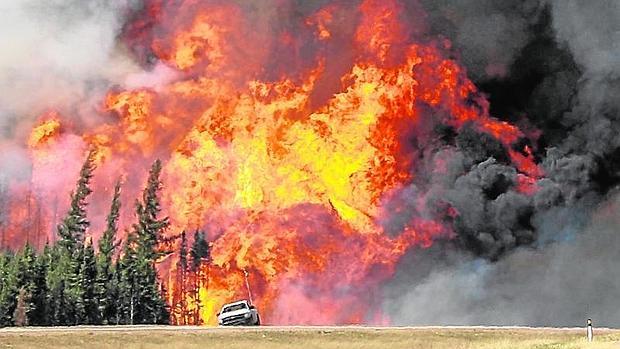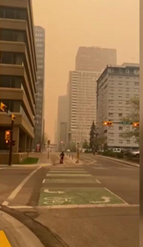
Wildfires persist in Western Canada after nearly two weeks. High temperatures and strong winds are hampering firefighters’ efforts, while poor air quality is affecting major urban centers.
Authorities have described this wave of fires as unprecedented for this time of year and warn about the need to be prepared for the hottest months of July and August. In the province of Alberta, there are 91 active fires, of which 27 are out of control. The presence of smoke is hampering aerial assessments of the fires, delaying extinguishing efforts. Since a state of emergency was declared on May 7, more than 17,000 people remain under evacuation orders and approximately 534,000 hectares of land have been consumed.
A total of 1,600 firefighters from the province are working at the scene, with another 600 coming from different parts of the country and 300 members of the Armed Forces. Canadian Prime Minister Justin Trudeau visited the area and said the military is providing support in fighting the fires, assisting in evacuations and ensuring people’s safety.

British Columbia is also experiencing a considerable number of fires, especially in the north of the province, with a total of 58 active fires. Authorities have implemented a ban on outdoor fire since Thursday. In Saskatchewan, 27 active fires have been recorded, with the Shaw and Vermette fires being the most concerning due to their large size, affecting 47,000 and 45,000 hectares respectively.
Poor air quality has affected even large urban centres hundreds of kilometres away from the fires. Environment Canada issued warnings in Calgary, Alberta’s most populous city, due to smoke and toxic particles, as well as reduced visibility. It also warned about the risks to the inhabitants of Regina and Saskatoon, located in Saskatchewan, and northeastern British Columbia.
In addition, the wildfires have had a negative impact on the country’s oil production, with a 4% reduction in production, especially in Alberta, the province with the highest activity in the hydrocarbon sector in Canada. Western Canada had already experienced a significant rise in temperatures during the summer of 2021, known as the “heat dome,” which triggered a series of fires, including one that destroyed 90% of the community of Lytton in British Columbia, which had previously recorded a national record temperature of 49.6 degrees Celsius.
